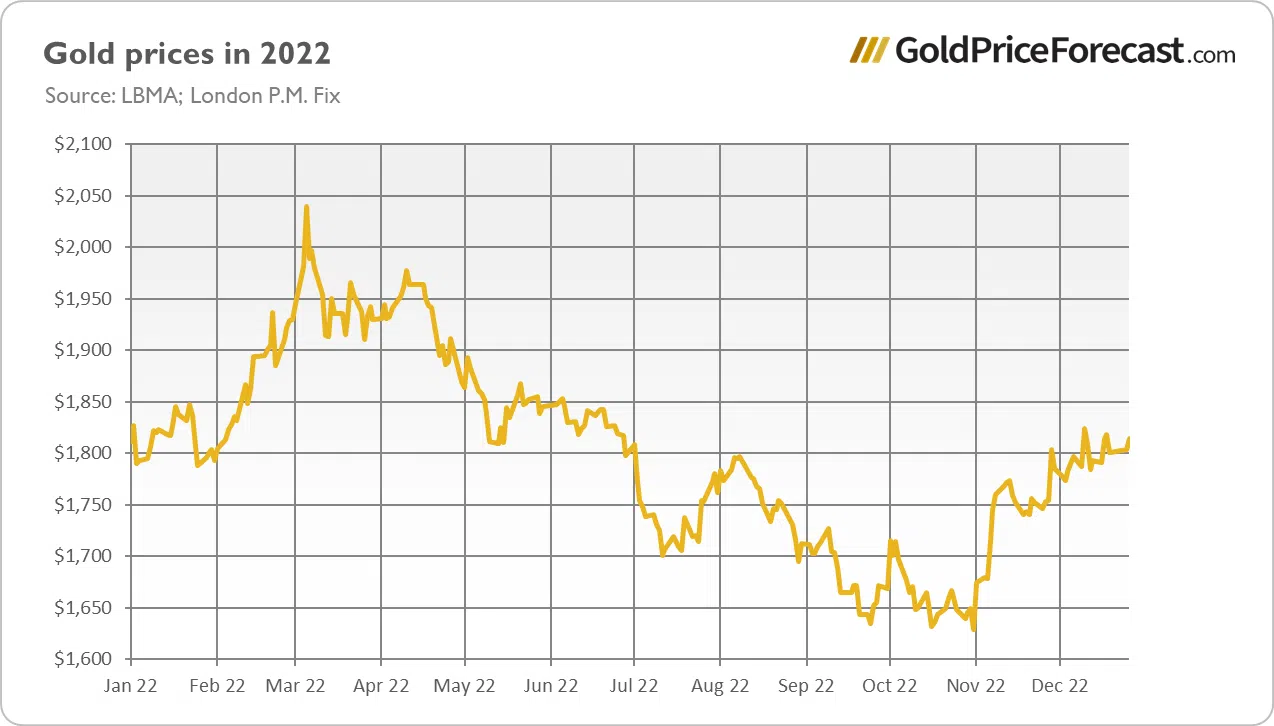What Are the Downside Risks for Gold in 2023?
Gold may rally above $2,000 this year. However, it may also decline below $1,500 if things go wrong. What is more likely?
My 2023 gold outlook is bullish. I bet the recession will arrive this year, which will prompt the U.S. central bank to pivot and cut interest rates. An economic downturn combined with a dovish Fed will send gold prices higher. But what if I’m wrong? Well, that’s impossible, as I’m always right! Let’s put jokes aside and deal with the downside risks to my baseline scenario.
Hence, the biggest threat to gold is that the recession won’t come. Instead, a soft landing enables the Fed to continue its hawkish stance for longer than markets anticipate. The aggressive tightening cycle curbs inflation, pushing it down to the target by the end of this year or in the first half of 2024. Then we have a return of the goldilocks economy with low inflation and moderate GDP growth. We had such macroeconomic conditions in the decade of the 2010s, when the economy was not too hot nor too cold. As a consequence, gold struggled, at least in the period of 2012-2018.
And What about Disinflation?
Some people also point out that instead of stagflation – i.e., economic stagnation combined with high inflation – we could experience quick disinflation that could even translate at some point into deflation. I would say that the risk of deflation – given the data on money supply and bank’s condition – is very low right now. But even if that happens, it could actually be beneficial for gold prices. When asset prices deflated during the Great Recession, gold served as a safe haven.
Quick disinflation is more probable, but it doesn’t have to be negative for gold prices. After all, inflation wasn’t positive for the yellow metal, and my bullish outlook doesn’t rest on inflation, but rather on recession. However, quick disinflation would make life easier for the Fed, enabling it to adopt a more dovish policy in the face of the economic crisis.
Implications for Gold
What does it all imply for the gold (and silver) market in 2023? Well, as the chart below shows, the price of gold ended 2022 basically at the level at which it started the last year.

If my bullish outlook proved to be true, 2023 should be much better for the yellow metal, and we could see the price of gold above $2,000 or even higher.
However, if there is no recession, gold could suffer. Disinflation would increase the real interest rates. And the U.S. dollar could further strengthen against other major currencies, adding downward pressure on gold prices. If there is a replay of the 1980s or the 2010s, the price of gold could decline substantially, even below $1,500.
I don’t see such a bearish scenario as likely. After all, we are already almost behind the Fed’s tightening cycle, not before as in 2012 when the price of gold plunged. And the tightening of monetary policy, with such high inflation, always led to recession, not to a soft landing. What’s important here is that the last three recessions were beneficial for gold prices. Hence, although it’s good to be aware of downside risks, I don’t consider them likely, at least in light of the current data.
Arkadiusz Sieron, PhD